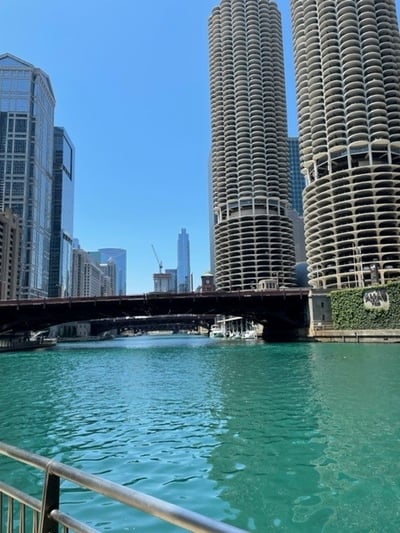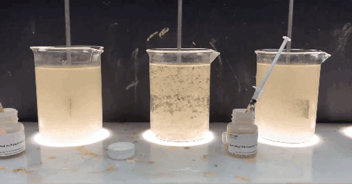Better Wastewater Management Practices Help Clean Up Chicago-Area Waters
Here in Chicago, the Chicago River is notoriously known as Bubbly Creek due to the high amount of garbage that was dumped in it during the late 1800s when the area was heavily industrial.
Thankfully, in 1900, the process of reversing the flow of the river was started and that project saved Lake Michigan from getting sewage and pollution dumped into it. It’s well known that you don’t swim in the river, and you definitely do not eat or drink anything that comes out of it.
However, that could be changing.

Wastewater, stormwater management practices make a difference
A new research study has shown that water quality in the Chicago River is improving, and we have wastewater and stormwater management practices to thank for that.
In the study, “Long-term trends show improvements in water Quality in the Chicago Metropolitan Region with Investment in Wastewater Infrastructure, Deep Tunnels, and Reservoirs (2020),” Pluth et al, researchers conducted a longitudinal study on water quality trends in the Chicago, Calumet, and Des Plaines rivers over the last 40 years.
The researchers used data from the Metropolitan Water Reclamation District (MWRD) ambient water quality monitoring program to find trends in several parameters, including:
- dissolved oxygen (DO),
- total Kjeldahl nitrogen (TKN)
- ammonium nitrogen (NH4+)
- total phosphorus (TP)
- total suspended solids (TSS)
- total organic carbon (TOC)
- fecal coliform (FC)
- chlorophyll-a
- chloride (Cl-)
- sulfate (SO42-),
- temperature
These parameters can tell you a lot about a waterway and whether it is healthy or not.
This researchers found there were increasing trends in DO, Cl- and temperature in the Chicago, Calumet and Des Plaines Rivers. The increase in DO can be attributed to the MWRD’s improvements in treatment to meet permit requirements. The increase in Cl- can be attributed to road salt runoff during the winter months.
Unfortunately, the increase in temperature is being seen all over U.S. rivers and is due to warming temperatures we are seeing every year as a result of climate change. The researchers also found decreasing trends in TOC, TKN, NH4+, TSS, FC and SO42-, which can be directly related to implementation of deep tunnels, aeration stations, and improvements in water treatment systems.
These trends were correlated to the change in management practices over the years. For example, in 1985 on the Calumet River, the expansion of a secondary treatment system was completed, which included aeration technology. This new technology directly affected the TKN and NH4+ concentrations and ultimately decreased them.
Another example of how change in management practices affected the rivers is the TARP system. TARP stands for Tunnel and Reservoir Plan (commonly referred to as Deep Tunnel). MWRD implemented Deep Tunnel to reduce flooding and pollution that is caused by sewer overflows from large rain events. This tunnel system helped significantly decrease concentrations of FC and TSS in all three rivers.
wasteWater management practices matter
So, what does this all mean?
The aforementioned study shows that wastewater and stormwater management practices, such as the ones the MWRD has implemented over the last 40 years, work.
By improving our wastewater management practices, we can continue to sustain healthy ecosystems. These waterways don’t just act as ecosystems, but they also act as places of recreation for citizens. With improved water quality, these waterways can be used safely for fishing (maybe you can even eat what you catch!), boating, kayaking and educational purposes.
So what can you do to improve your wastewater or stormwater management techniques?
- Stay up to date on new water treatment technologies
- Consider switching to green chemistry
- Follow best management practices
- Don’t be afraid to be innovative
- Look into grants that will help fund better management practices
As we outlined in our recent piece on water sustainability, the Dober Water Treatment team is also doing its part to offer more sustainable water treatment solutions.
Want to chat with a Dober water treatment expert? Reach out to us and we’d be happy to chat.
References
MWRD “Water Quality” page. Accessed at: Metropolitan Water Reclamation District of Greater Chicago (mwrd.org)
MWRD “Tunnel and Reservoir plan” page. Accessed at: Metropolitan Water Reclamation District of Greater Chicago (mwrd.org)
Pluth, T. B., Brose, D. A., Gallagher, D. W., & Wasik, J. (2021). Long-term trends show improvements in water quality in the Chicago metropolitan region with investment in wastewater infrastructure, deep tunnels, and reservoirs. Water Resources Research, 57, e2020WR028422. https://doi. org/10.1029/2020WR028422



